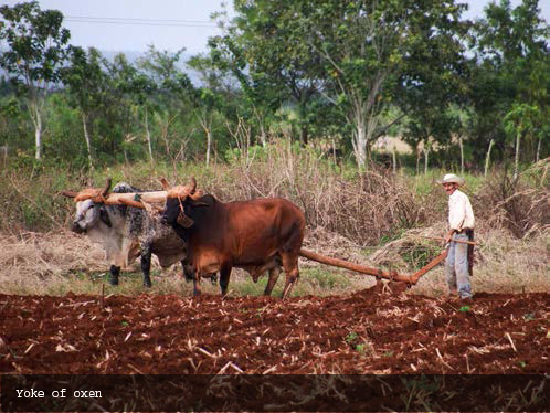By Boyd Ready
To keep the country, country, we must have agriculture. The latest USDA statistics for Hawaii show fewer farms, and an average net profit of only $27,000 per year: hardly a living wage. Difficulties for agriculture are not new. War, epidemics, international economics, invasive species, shipping, and oppressive outside political control are part of Waialua’s agricultural history.
Waialua in the 1780s had about 8,000 residents and was a rich source of food: kalo, sweet potato, banana, breadfruit, reef and pelagic fish, fishpond mullet and milkfish, domestic animals (pig, dog, & chicken), and freshwater shrimp. Warfare interfered with agriculture during the Kahekili (Maui) and Kamehameha (Hawaii) battles. Once a war chief had all Oahu’s pigs killed so people would be too busy looking for food to revolt while the chief was away fighting. Ten to fifteen thousand warriors newly settled in Oahu created food scarcity. So, terraces and water ditches for kalo lo‘i were further up the streams, including the Anahulu.
The ali‘i demand for sailing ships, hardware, and imports led to the 30-year exploitation of ‘iliahi the forest sandalwood, in a brisk China trade. The numerous, new ali‘i expected food and sandalwood, but the scarcity of food in the mountains during weeks of logging meant hardship. Yet large quantities of pork, kalo, and sweet potato demanded by rulers were still being carried to Honolulu.
Cattle, goats, and sheep, without fences, relentlessly destroyed kuleana farm plots. Harm to the cattle, owned by foreigners and some ali‘i, meant a fine. Food became scarce. Teams of oxen dragged stones to build miles of walls to protect kuleanas. The practice created skills for handling oxen so the upland fields could be plowed for cash crops. The whaling trade and the California gold rush demanded pork, beef, potato, and other goods. But the gold rush demand ended by 1852, then the whaling trade fizzled out.
Horrific epidemics of measles, other deadly, unknown plagues, and then smallpox struck, killing many. Working men joined whaling ships, or emigrated to Sutters Mill and other mainland plantations, and never came back. Cattle sold for almost nothing as the meat could not be sold, so people produced hides, and collected the ‘pulu’ fibers from forest hapu‘u fern, for mattresses, and gathered the black culinary mushroom, pepeiao akua, in the forests. Waialua’s population steadily plummeted down to only 1,200 people in the 1860s.
Beginning in the 1850s, Chinese immigrants began planting idle kalo wetlands with rice. The population began to grow. By the 1870s Waialua was the third largest rice producer on Oahu. In the 1880s Japanese immigrants, preferring different, short-grain rice, was imported cheaply from mechanized California farms. Waialua’s rice wetlands gradually changed to ‘hasu,’ or lotus root.
Waialua today has suffered a pandemic. Workers emigrate to the mainland. Invasive species attack our plants. Market forces closed the 10,000-acre sugar plantation. Wildfires and ag theft appear unstoppable. Waialua must be innovative and resourceful to ‘keep the country country’ with sustainable agriculture. Farms need more than $27,000 net profit in a year to survive! How they are doing it will be a story for another day.
For more information about the Historical Society or to schedule a walking tour, contact Antya Miller at 808-342-8557 or email info@waialuahistoricalsociety. org



